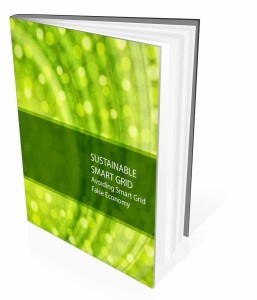 Cities are competing for a place in the future top 10 global economies, and a reliable energy supply will be essential to reach that goal. That is why this report addresses Smart Grid. This book is written for those in the business of deciding the future of our energy system, on behalf of our society and environment. In these pages you will find out why ignoring external costs can also cost the very thing you set out to achieve.
Cities are competing for a place in the future top 10 global economies, and a reliable energy supply will be essential to reach that goal. That is why this report addresses Smart Grid. This book is written for those in the business of deciding the future of our energy system, on behalf of our society and environment. In these pages you will find out why ignoring external costs can also cost the very thing you set out to achieve.
♦
The collective wisdom about Smart Grid cost-effectiveness relies on incomplete numbers.
- Meta-analysis of cost-benefit analyses shows most rely on demonstrating socio-economic benefits of smart-meters to show positive return on investment, but
- None of the industry written cost-benefit analyses attempt to include the costs to society due to Smart Grid (such as: grid interruptions, breaches of privacy, e-waste, or higher costs)
This means that the traditional approach is ignoring an elephant in the room. That consumers will probably resist the Smart Grid because it isn’t better for them.
Instead of decrying the failures of Smart Grid, I want to tell you what you can do about it. Because I have a great new methodology to focus in on the solution.
—♦♦♦—
Introducing Sustainable Smart Grid
Avoiding Smart Grid False Economy
Most methodologies are vague about addressing social and environmental barriers. This report addresses and solves this problem.
This report presents a systematic approach to unlocking the real opportunities for the energy sector, for long term growth and a secure market position.
Step 1#
Identify the big wins for the energy sector
Step 2#
Does the Smart Grid proposal address these big wins?
Step 3#
See the elephant in the room – Identify the risks and costs to the consumer (and other externalities)
Step 4#
Combine technology solutions that minimise the major risks and address the biggest opportunities
This approach aims to help you:
- Identify the lighthouse projects to invest in
- Lower the barriers to expansion of pilot projects
- Find solutions that consumers embrace
